“Burberry Is Our Brand”: Callum Turner, Skepta, and Barry Keoghan Talk Daniel Lee's Great British Fashion Show

- Oops!Something went wrong.Please try again later.
- Oops!Something went wrong.Please try again later.
- Oops!Something went wrong.Please try again later.
- Oops!Something went wrong.Please try again later.
Courtesy of Burberry / Dave Benett for Getty Images
This is an edition of the newsletter Show Notes, in which Samuel Hine reports from the front row of the global fashion week circuit. Sign up here to get it in your inbox.
“Burberry is our brand,” said Callum Turner. On Monday evening, the actor and all around heartthrob was standing under a big top tent pitched on the grounds of Victoria Park for Burberry’s Fall-Winter 2024 show. Turner, wearing a long tailored wool coat, was explaining how lovely it was to be there when he summed up just what the heritage trench coat-maker means on his side of the pond. Burberry has a gravity here. There is a real sense of ownership and emotional investment in national emblems in the UK, and in the realm of clothing, nothing is more synonymous with Britain than Burberry, and Burberry with Britain. Check scarves are one thing all of them can agree on. Which is why the label’s high-stakes turnaround under Daniel Lee, now one year into the job, has been so closely scrutinized.
As my London-based colleague Murray Clark put it in his sharp review of the new collection, “historically, Burberry has succeeded when the UK has succeeded.” With a recession underway, things have been better over here. But all weekend in London, the dour locals seemed to be in a good mood, and it wasn’t just because the sun came out. There was a genuine sense in the air that Burberry, at least, was back.
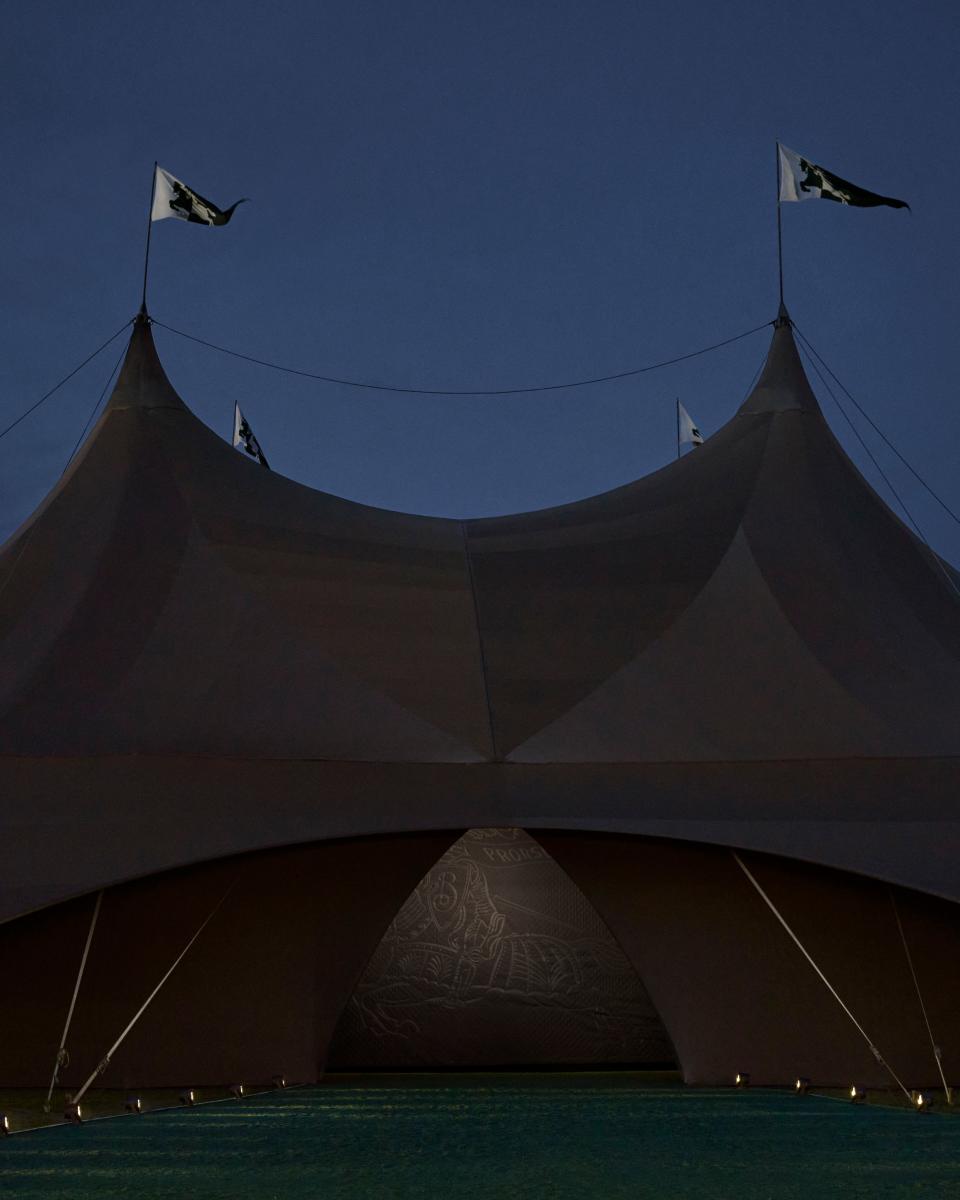
It started with what was widely regarded to be a compelling edition of London Fashion Week, and continued with the BAFTAs, which hosted so many stars from near and far that there was an actual black car shortage in Mayfair on Sunday night. The British Oscars are not usually, I was told, quite so well-attended, but it’s a competitive awards season and the red carpet platform continues to get bigger and more important, particularly for Hollywood’s rising fashion stars. One slightly bleary movie star simply sighed when I asked him about the previous night’s festivities. “London has been absolutely stacked all week,” he remarked. Many VIPs had been out till sunrise at the afterparties that had taken over London’s private clubs and ritzy hotels.
The BAFTA-Burberry adjacency set the tone for Lee’s third runway show, and by the 7:00 pm showtime, everyone had done an IV and made it to the front row, which distinctly reflected the UK’s rising cultural might. There were footballers (Bukayo Saka, Gareth Bale), rappers (Central Cee, Little Simz), actors (Jonathan Bailey, Turner), legends (Lily Allen, Liberty Ross), offspring (Georgia May Jagger, Lila Moss), and Delevignes (Cara, Poppy). “Before, it was so Hollywood,” said one attendee, referencing Burberry’s Riccardo Tisci era, which had a more abstractly international and social media-driven vibe.
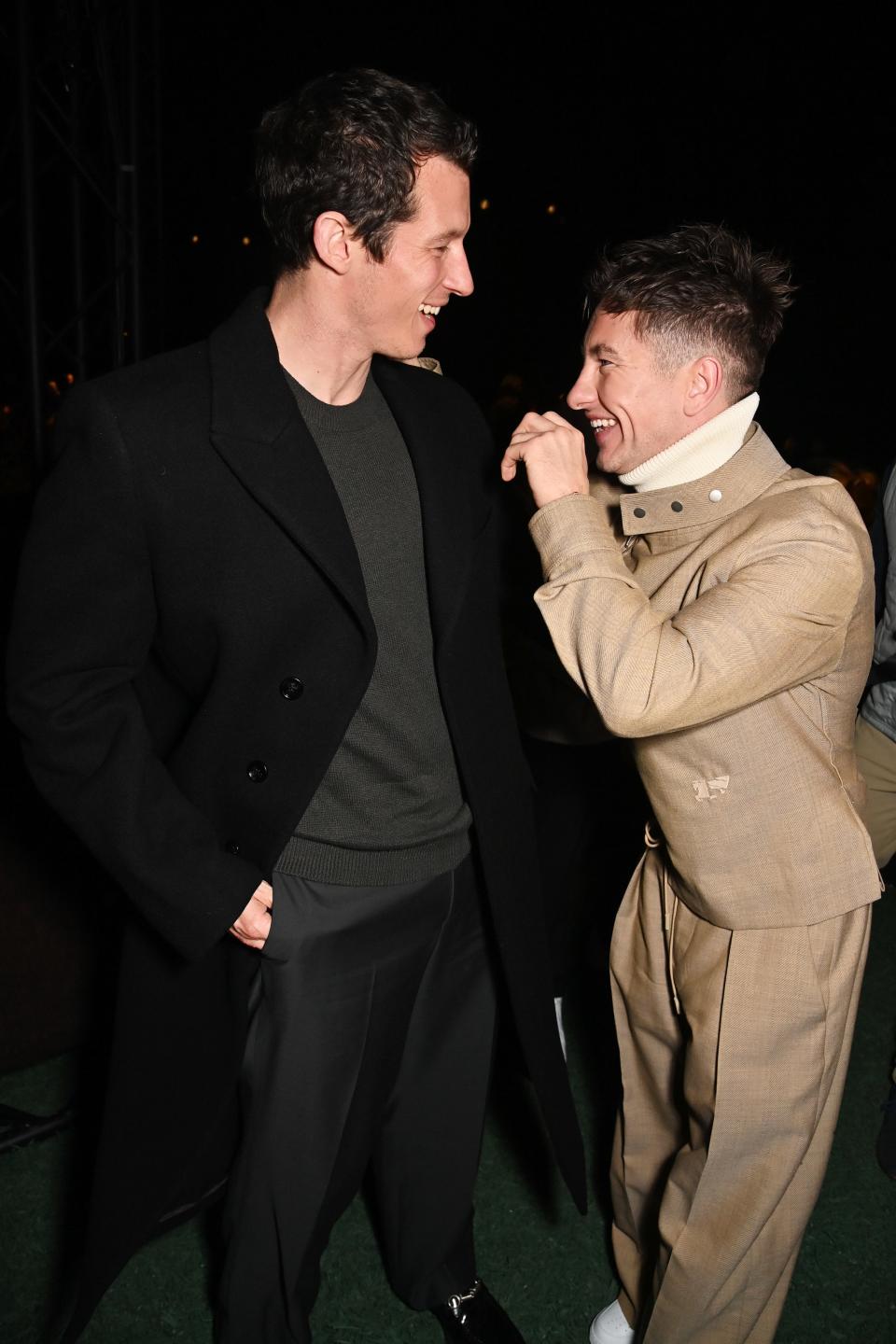
I asked Turner, who first modeled for Burberry almost a decade ago, what he was hoping to see out of Lee’s third go-round. “Oh, uh, Barry Keoghan!” he said, as the Irish actor practically bowled into us like a rugby flanker. Keoghan gave his Masters of the Air co-pilot a bear hug, and took the opportunity to tell GQ how he felt seeing his February issue cover for the first time: “Oh, it was amazing man, it was a proper moment, isn’t it? GQ, it’s massive, it’s feckin’ great. I’ve got it in print.”
Irish leading men notwithstanding, Lee’s Burberry is basically an avengers of New Britannia. “He doesn’t go around screaming, I’m culture,” said Skepta of Lee, when I asked him about the young and local crowd Lee casts in campaigns. The rapper and actor, wearing a bottle green shearling coat, is as loyal a Burberry fan as they come, but he’s also clearly become a Daniel Lee devotee, suggesting that the designer from West Yorkshire is himself a part of the community he’s curating around the brand. “I feel like he’s still connected, he still cares about what people are doing. So it’s evident when Daniel does a show or campaign, or when he even turns up himself—because he still turns up for people—you can see his heart’s in it, for real.” Skepta mentioned Lee had recently attended a screening of his new movie, Tribal Mark.
If only turning around the national flagship was so simple. Lee is expected to spark a shopping frenzy in order to grow sales from around $3 billion per year to north of $5 billion, which takes a lot more than a well-curated front row. The designer is aiming to elevate Burberry into a true luxury house, and needs to capture the fickle high-spending consumer by introducing fresh ideas, which he did to such success at Bottega Veneta. But Lee also can’t afford to change Burberry too much. Bottega was a blank page, and Burberry is nothing short of a national idea.
“The curse and also the beauty of the brand,” Lee said backstage, “is that it appeals to such a broad audience.”
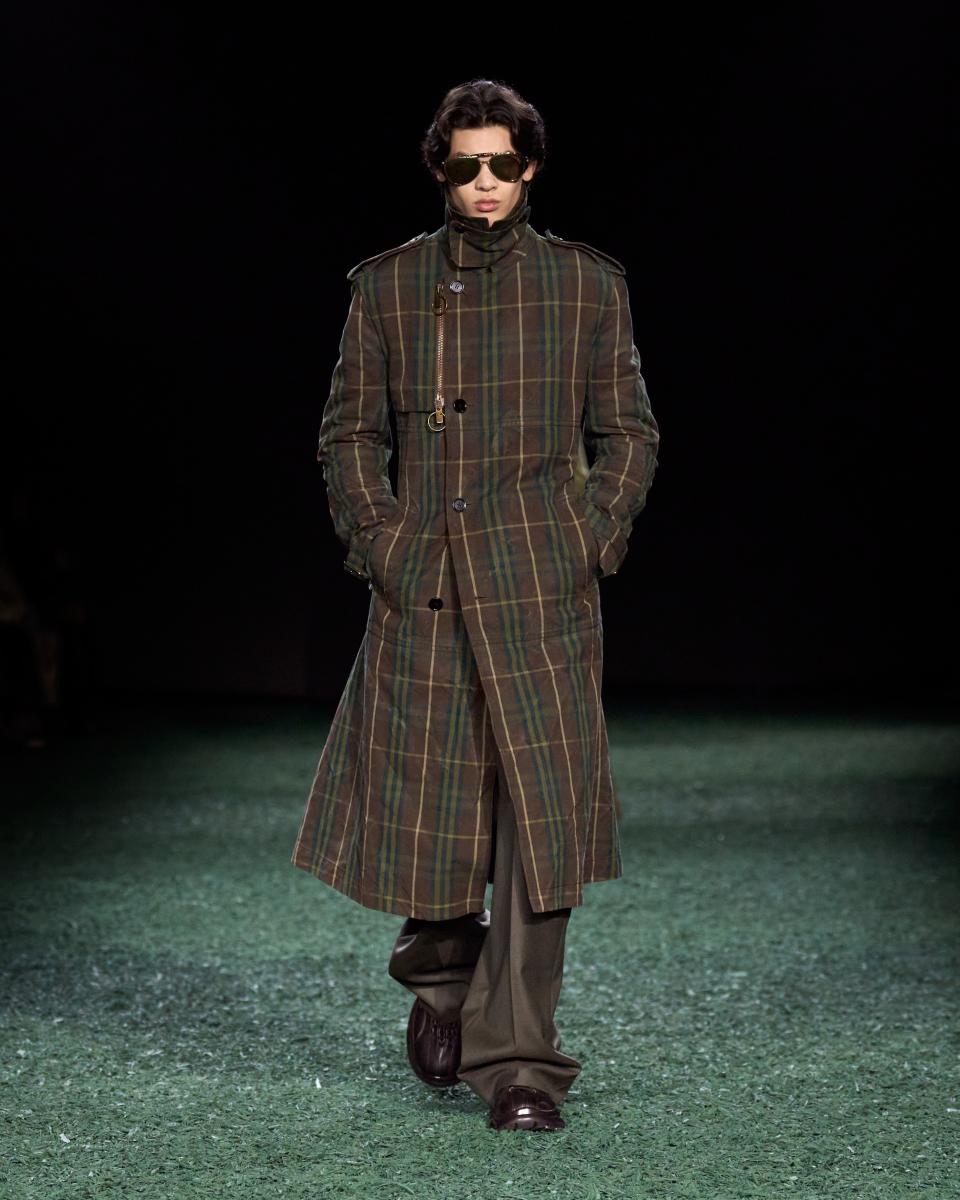
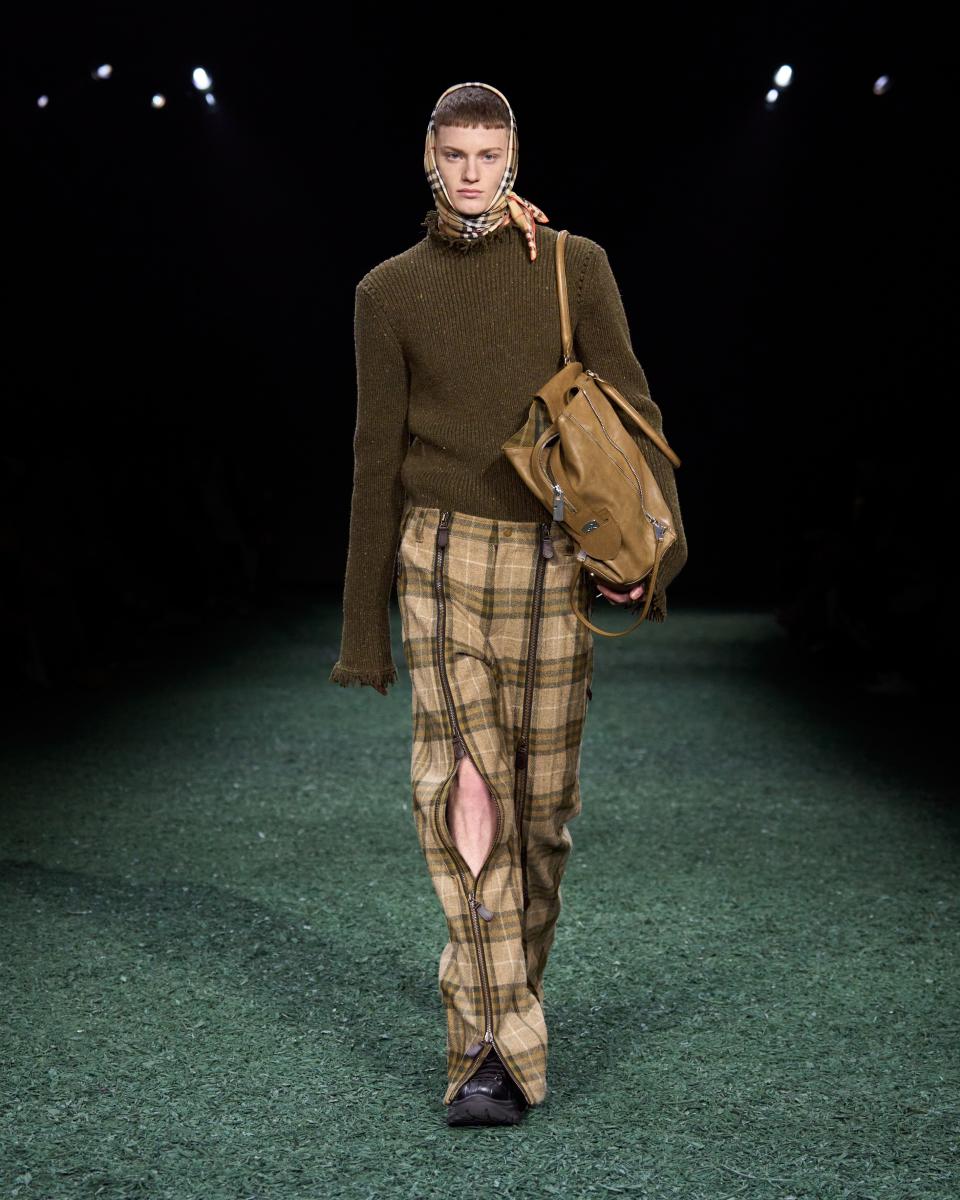
At about half-past, every last guest wearing a massive fur trapper hat had scampered to their seat. In place of benches were brown fleecy pillows, with sage-green woodchips spread underfoot and a vegetal scent in the air. Lee’s first two collections felt weighed down by the brand’s curse rather than its beauty, like the designer was grafting a new brand onto an existing one and reluctantly borrowing some house codes to make it all stick. But this time, more looks than not reminded me of actual Londoners I had seen on a long walk earlier in the day: there was the banker in a beefy pinstripe suit, the club kid dragging home in rave pants and a scarf swiped from coat check, the shaggy rocker in huge sunglasses a slim trench coat (here rendered in heavy moleskin fabric). “With this collection, we really started thinking more and more about the people that wear Burberry,” Lee said. “That was really the beginning and the end, the different types of characters, the people that have Burberry in their lives.”

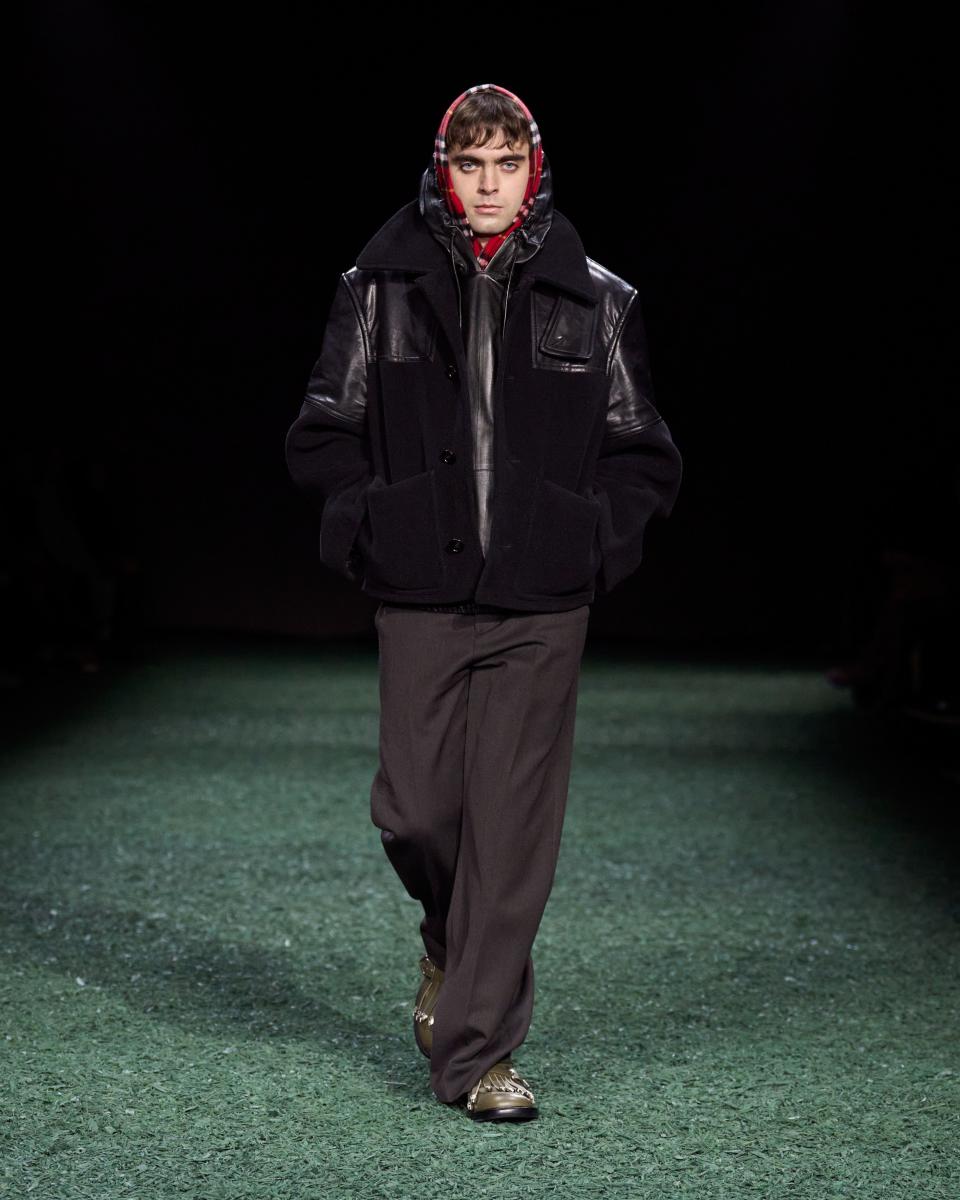
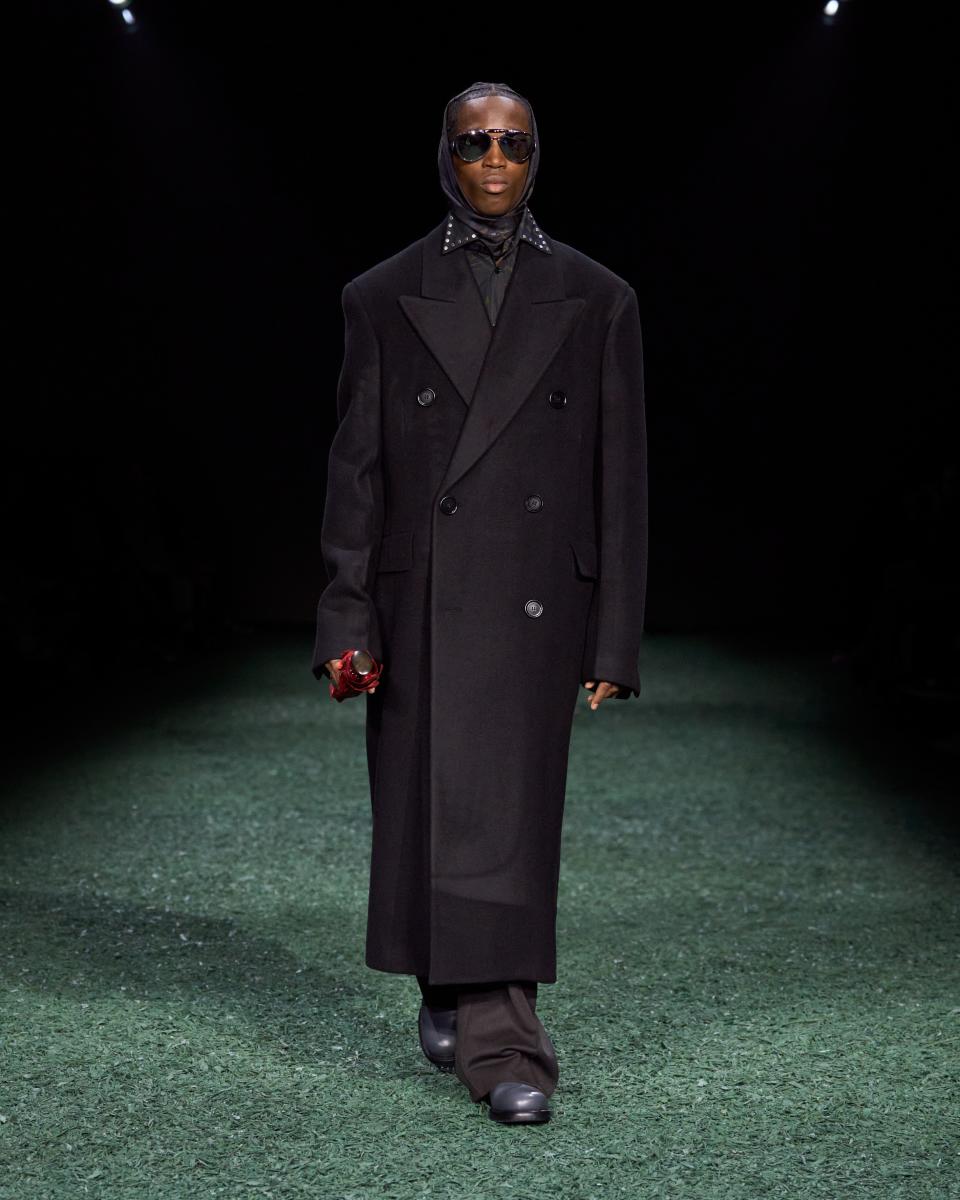
Lee added that he was looking at characters ranging from the late Queen Elizabeth and the royal family to football hooligans, the latter represented dead-on by a strong-browed Lennon Gallagher in a donkey jacket. Heavy olive wools spoke to Burberry’s countryside origins, while Nova Check scarves tied babushka-style spoke to the way the accessory is actually worn today in the city. A quartet of footballers across from me nodded in rhythm to the new British national anthem—Amy Winehouse’s “Back to Black”—as Naomi Campbell swept down the runway in a crocheted gown, followed closely by (here’s one for the real fashion nerds) Phoebe Philo’s daughter, Milo Wigram, who closed the show in a high-neck leather trench and long plaid skirt.
I liked it, but the Brits in the audience loved it. “I thought it was brilliant,” said Jonathan Bailey afterward. “It was like a sleazy love letter to Camden in 2006.” To each their own Burberry.
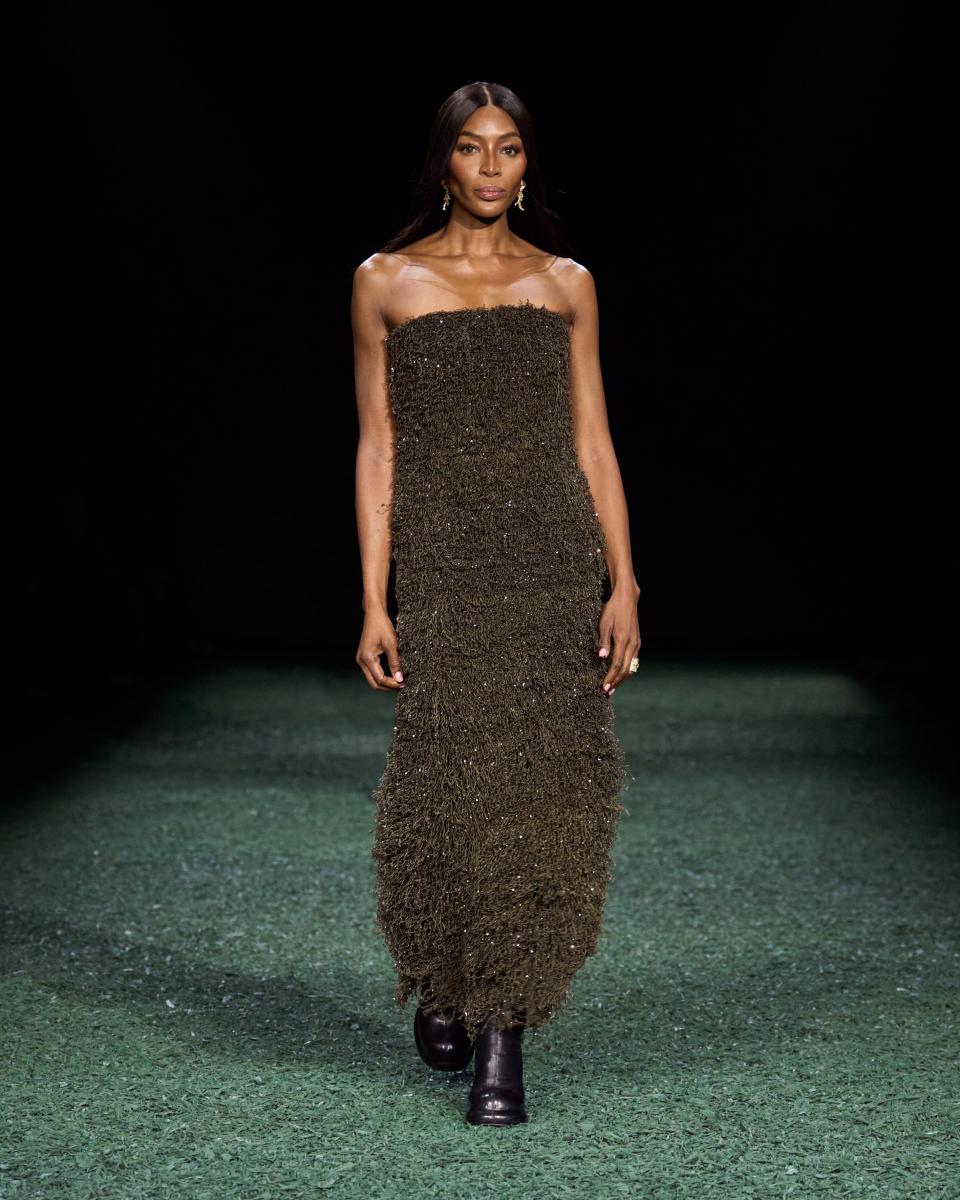
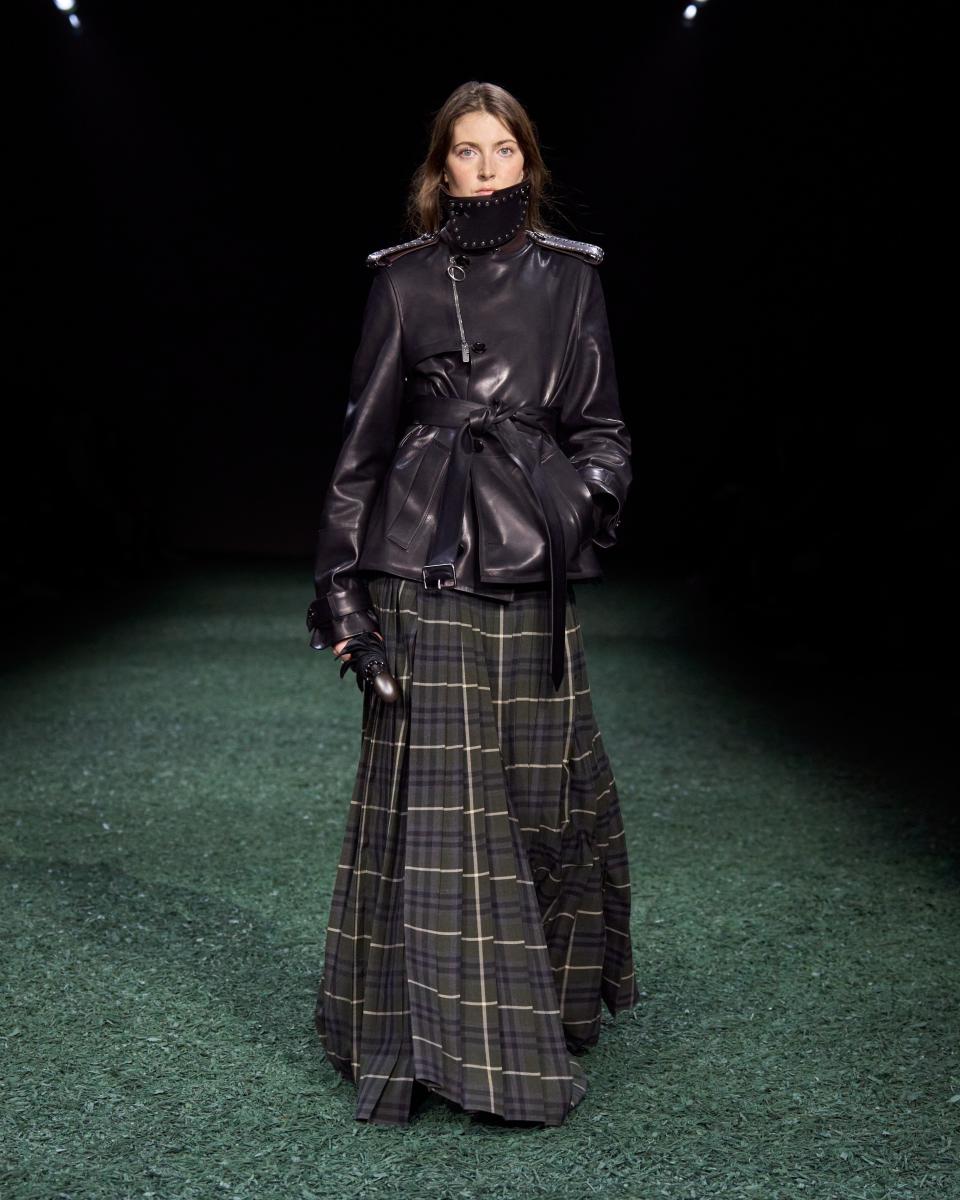
At the afterparty, everyone ignored the coat check to wear their trenches inside. Around midnight, I ran into Slew, a young London-born rapper who had just walked in the show. He was much less wistful than Turner, and claimed zero nostalgic attachment to plaid scarves or birthright to gabardine. Burberry was not his brand. But then Lee took over, and Slew said he started paying attention. He was wearing a green plaid track suit of Lee’s design. To him, it was nothing more than a dope outfit. “I never would have bought Burberry before,” he said. “Now, I actually want to wear it!”
See all of our newsletters, including Show Notes, here.
Originally Appeared on GQ

